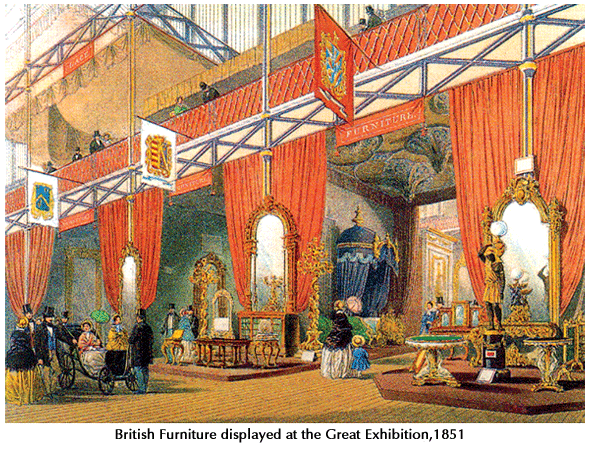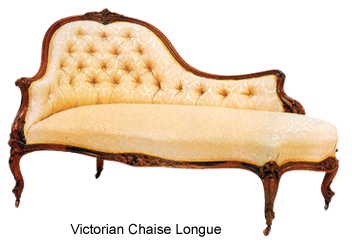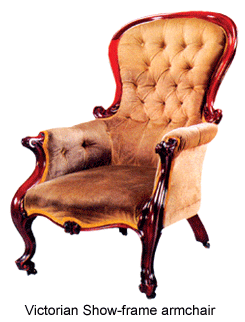- Prelude
- Editorial
- ...Where ever I stumble, let painting lie before me....
- ...Colour guides in its own direction...
- Abstract Art: Popular Myths and History
- Abstract Rhetoric:
- Ram Kumar: A transition from figurative to abstract
- I walk the line
- Exploring a twilight zone
- Articulating the Abstract voice from Madhya Pradesh
- Perception of Abstract in forms
- Confronting Cultures: The Dialectic of Abstraction in Bengal Art
- K.C.S. Paniker and his Words and Symbols
- Dialectics of Abstract Art and Its Indigenous Identity
- Between Ambivalence and Criticism: Why Abstraction?
- Notations and Rhythm in Space: Sushen Ghosh
- Victorian Era: Eclectic Furniture
- Patek Philippe : an overview
- The “Theme Pandals” of Durga Pujo: An Unexplored Discourse
- Musings on Music
- Butterflies in the stomach… still
- Contemporary Art Market Report 2009-10
- Artist Index and Statistics
- Auction Reports
- Recent works of Pavan kumar D. - In the Journey of Learning things
- Narrating “with a pinch of salt” Paintings of K.P.Reji
- Reclaiming an artist of true calibre
- Musings from Chennai
- An Annual Homage..
- Art Events Kolkata: September-October 2010
- Mumbai Art Sighting
- Art Bengaluru
- Unveiling the next in line
- Preview
- In the News
- Sotheby’s : Important Watches Hong Kong
ART news & views
Victorian Era: Eclectic Furniture
Volume: 3 Issue No: 10 Month: 11 Year: 2010

The reign of Queen Victoria in Britain is considered to be the era of Victoria. It stretched from 1837 to 1901, though many historians believe that the passage of the Reform Act 1832 marks the true inception of a new cultural era. The Victorian Era of Great Britain is considered the height of the British industrial revolution and the apex of the British Empire. It was preceded by the Regency Era and followed by the Edwardian period. Queen Victoria, after whom the era was named, Queen of the United Kingdom of Great Britain and Ireland, was also the first queen to use the title Empress of India. It was a great period when many artistic styles, literary schools, as well as social, political and religious movements flourished. It was a time of economic prosperity, imperial expansion, and great political reform of Britain. It was an extraordinarily complex age which is sometime called the Second English Renaissance.  It was the beginning of Modern Times. The Victorian Era was the period of scientific advancement too. The technical and industrial advances, the strides in medicine and physical sciences continued throughout the century. The industrial revolution during the period led to increase in the prosperity of the people whereas changes were taking place within social classes of Victorian England. The middle class of the society was getting prosperous. Conditions of the working of the working class were still dismal.
It was the beginning of Modern Times. The Victorian Era was the period of scientific advancement too. The technical and industrial advances, the strides in medicine and physical sciences continued throughout the century. The industrial revolution during the period led to increase in the prosperity of the people whereas changes were taking place within social classes of Victorian England. The middle class of the society was getting prosperous. Conditions of the working of the working class were still dismal.
In America, the Victorian Era is captured in the gun-slinging, trail-blazing culture of the "Wild West", especially during the gold rush of the late 1840s. The period was also marked by tragedies such as the forced relocations of the Native American populations along the Trail of Tears and the war with Mexico over the Western frontier. Perhaps the most devastating event of the era was the American Civil War that nearly ravaged the entire nation in the 1860s. For nearly four years, the North and South engaged in a war that claimed the lives of over half a million Americans. The war finally ended in 1865, with the surrender of the Confederacy and the adoption of the Thirteenth Amendment abolishing slavery.
Industrial Revolution had a dramatic impact on interior design in the Victorian Age, increasing the prosperity of the middle class and allowing them,  along with other new opportunities, the chance to change the decoration and ornamentation of their homes. Some, unsure of how to best portray their new status and wealth, chose to use architecture and furnishings that had previously been used only by aristocracy and the upper class. In these homes, the owners crammed in as many pieces of furniture, fabrics, and knickknacks as possible, both in an attempt to showcase new cultural interests, prosperity, and status, as well as to demonstrate the fashionable belief that bareness in a room was a sure sign of poor taste. This rise in social aspiration and wealth of middle class provided opportunities to enterprising and inventive furniture-manufacturers. Improved transport, communications and new ideas in materials, methods of manufacture was more accessible to a larger number of people. Mechanisation of furniture industry and factory production replaced the traditional craft-apprenticeship system.
along with other new opportunities, the chance to change the decoration and ornamentation of their homes. Some, unsure of how to best portray their new status and wealth, chose to use architecture and furnishings that had previously been used only by aristocracy and the upper class. In these homes, the owners crammed in as many pieces of furniture, fabrics, and knickknacks as possible, both in an attempt to showcase new cultural interests, prosperity, and status, as well as to demonstrate the fashionable belief that bareness in a room was a sure sign of poor taste. This rise in social aspiration and wealth of middle class provided opportunities to enterprising and inventive furniture-manufacturers. Improved transport, communications and new ideas in materials, methods of manufacture was more accessible to a larger number of people. Mechanisation of furniture industry and factory production replaced the traditional craft-apprenticeship system.
Throughout the second half of the 19th century, International exhibitions were a forum for the world trade, so that almost for the first time fashion was set on an immediate international footing. These exhibitions invariably had large display of costly and lavish furniture. The first of the major international exhibition was held in 1851 in the specially erected Crystal Palace in Hyde Park, London. Known as the Great Exhibition, it featured all categories of exhibits, from machinery to sculpture. France, not to be outdone, held an Exposition Univeselle in 1855 and regularly, at an interval of eleven years.  The last of these huge exhibitions was the Paris Exhibition of 1900, in which revival styles and the works of Francois Linke and Emile Galle were seen under the same roof, reflecting the wide choice that had become available as a result of the inventiveness of 19th century design and marketing. Other European countries held exhibitions, but those were not as grand as the ones held in Britain and France.
The last of these huge exhibitions was the Paris Exhibition of 1900, in which revival styles and the works of Francois Linke and Emile Galle were seen under the same roof, reflecting the wide choice that had become available as a result of the inventiveness of 19th century design and marketing. Other European countries held exhibitions, but those were not as grand as the ones held in Britain and France.
The design of furniture in the Victorian Era was a revival and mixing of various old styles. There was an eclectic revival of styles in the furniture design with interpretation of historic styles and introduction of cross-cultural influences from middle- east and Asian furniture. No particular style dominated the creation of Victorian furniture. Rather, the designers drew inspiration from Gothic, Tudor, Elizabethan, English Rococo, Neoclassical and other periods. There were already four styles in furniture design prevalent at the time Queen Victoria came to the throne in 1837. The Encyclopedia of Cottage, Farm and Villa Architecture and Furniture (1833), by John Claudius Loudon (1783-1843) was the source book for furniture and Architectural design. These four styles were: the Grecian or modern style which is by far the most prevalent; the Gothic or perpendicular style which imitates the lines and angles of Tudor architecture; the Elizabethan style which combines Gothic with Roman or Italian manner; and the style of Louis XIV or the florid Italian which is characterised by curved lines and excess of curvilinear ornament.  The passage of furniture design in Victorian Era is seen in three phases, Early Victorian influenced by gothic and classical styles, Mid Victorian mainly Rococo and naturalistic style and Late Victorian Aesthetic, Fashionable and Art furniture styles. Since furniture was needed by new urban households which had little experience of acquiring sophisticated pieces but demanded more fashionable than the vernacular country-craft tradition, there were great fluctuations in both styles and types. Machine production methods were developed rapidly and because of this production was of cheap furniture for popular use.
The passage of furniture design in Victorian Era is seen in three phases, Early Victorian influenced by gothic and classical styles, Mid Victorian mainly Rococo and naturalistic style and Late Victorian Aesthetic, Fashionable and Art furniture styles. Since furniture was needed by new urban households which had little experience of acquiring sophisticated pieces but demanded more fashionable than the vernacular country-craft tradition, there were great fluctuations in both styles and types. Machine production methods were developed rapidly and because of this production was of cheap furniture for popular use.
The simple Grecian lines were out of fashion. These were more imposing furniture with plenty of curves, rounded corners and glossy finishes. The motifs and elements from different periods were used together.  Mahogany and Rose wood were the most popular wood but Oak was still very much in use. Early Victorian furniture had elements of Regency and William IV style with curved backs and some scrolled or reeded decoration. Low and Card tables were very popular for entertaining. The military furniture also known as Campaign furniture was very popular due to the fact that the army had to move frequently.
Mahogany and Rose wood were the most popular wood but Oak was still very much in use. Early Victorian furniture had elements of Regency and William IV style with curved backs and some scrolled or reeded decoration. Low and Card tables were very popular for entertaining. The military furniture also known as Campaign furniture was very popular due to the fact that the army had to move frequently.
Mid Victorian furniture had more curves, shiny finish with French polish, rich upholstery. The trend of furniture became more feminine, comfort was a big factor in design with easy chairs, sofas and more dining chairs. In the late 1880s reproduction furniture was very much in demand. Chippendale and Sheraton style were copied by well-known makers like Gillows of Lancaster.
Victorian Arts & Crafts furniture became very popular in mid to late Victorian times. The furniture was handmade in simple country style constructed in solid wood and had few decorative effect. Morris and co. were the renowned cabinet makers in Arts & Crafts style. They had the superiority in their handmade pieces that were affordable for most classes and still very fashionable.
 The Victorian furniture in America had few remarkable cabinet makers. One of the most famous designers from the Victorian Era in America was Charles Eastlake. He denounced the Rococo style, and in mid 1850s published a book named Household Taste which brought forth the Eastlake Era of Victorian furniture design in America. The Victorian style introduced a new wood in place of long favoured Mahogany in America, it was Rose wood. During the early period several American craftsmen of superior skill used it. One of them was John Belter, New York's leading cabinet makers from 1844 to 1865.
The Victorian furniture in America had few remarkable cabinet makers. One of the most famous designers from the Victorian Era in America was Charles Eastlake. He denounced the Rococo style, and in mid 1850s published a book named Household Taste which brought forth the Eastlake Era of Victorian furniture design in America. The Victorian style introduced a new wood in place of long favoured Mahogany in America, it was Rose wood. During the early period several American craftsmen of superior skill used it. One of them was John Belter, New York's leading cabinet makers from 1844 to 1865.
The Industrial revolution during the Victorian Era saw the use of new materials and technique in manufacture of furniture. The demand for mass production for commercial use and fashionable appeal gave the impetus to search for new materials and techniques.  Throughout the century both the British and American designers experimented with new materials. Material like papier mache for decorative and painted furniture, Cast iron for outdoor furniture and hollow metal tubings and strips for Rocking chairs, delicate twisted-wire furniture for chairs and small tables were used. Natural materials like roots & branches of the trees, horns and antlers were used for rustic furniture; wicker, bamboo and rattan were used for verandah and Garden furniture. Bentwood furniture made by Thonet factories in Europe was enormously popular in the United States. One of the most distinctive developments was the invention of various types of mechanical or 'patent' furniture. The furniture pieces had some sort of mechanical system for its effective use.
Throughout the century both the British and American designers experimented with new materials. Material like papier mache for decorative and painted furniture, Cast iron for outdoor furniture and hollow metal tubings and strips for Rocking chairs, delicate twisted-wire furniture for chairs and small tables were used. Natural materials like roots & branches of the trees, horns and antlers were used for rustic furniture; wicker, bamboo and rattan were used for verandah and Garden furniture. Bentwood furniture made by Thonet factories in Europe was enormously popular in the United States. One of the most distinctive developments was the invention of various types of mechanical or 'patent' furniture. The furniture pieces had some sort of mechanical system for its effective use.
Victorian furniture by far is the most important furniture style in the furniture design history. The revival of classical styles and its modern interpretation heralded the Modern Era in furniture design history. The use of new materials, new techniques of manufacturing furniture, adopting motifs and forms of other countries gave the Victorian furniture an eclectic nature which is very unique.